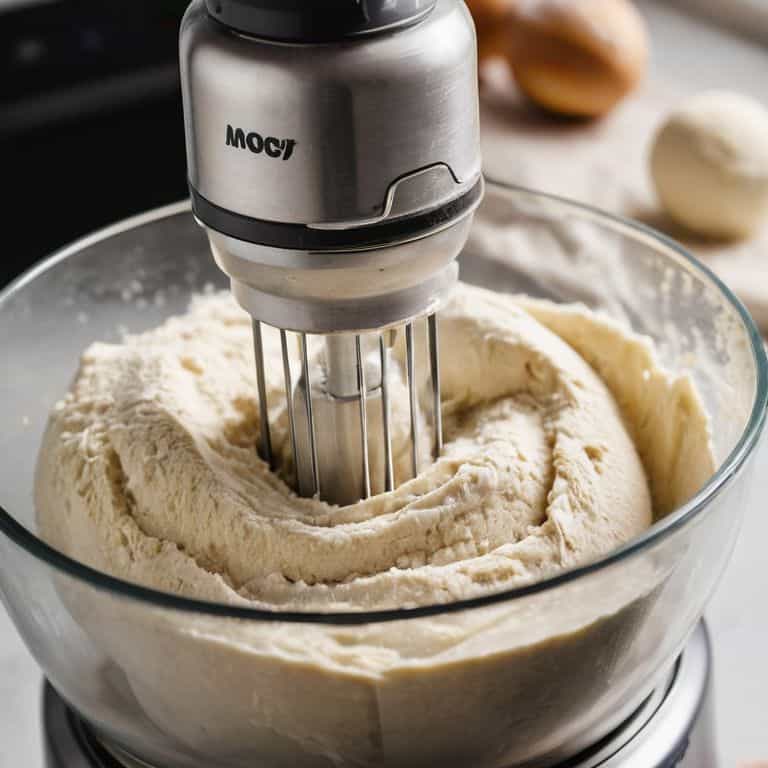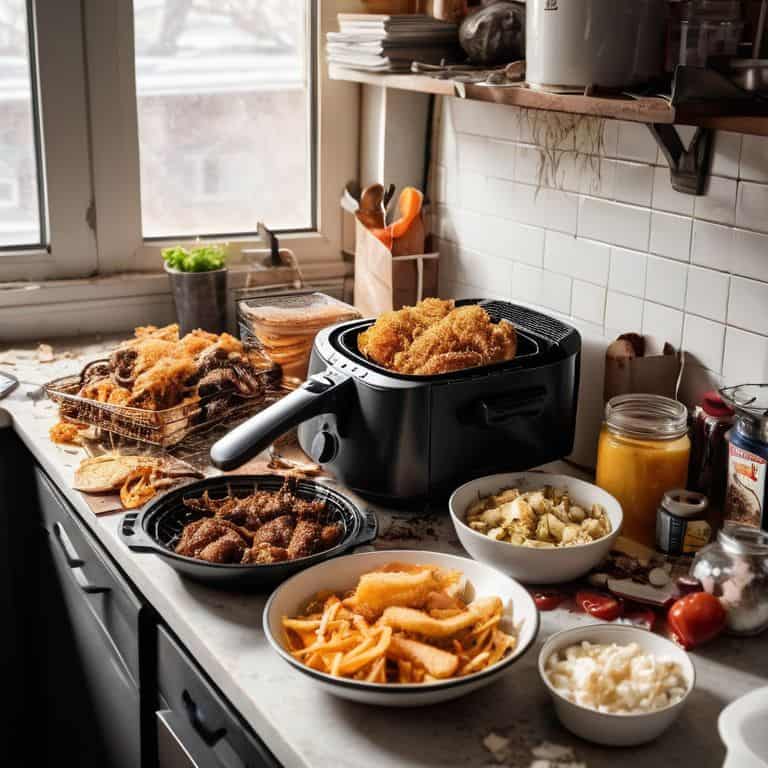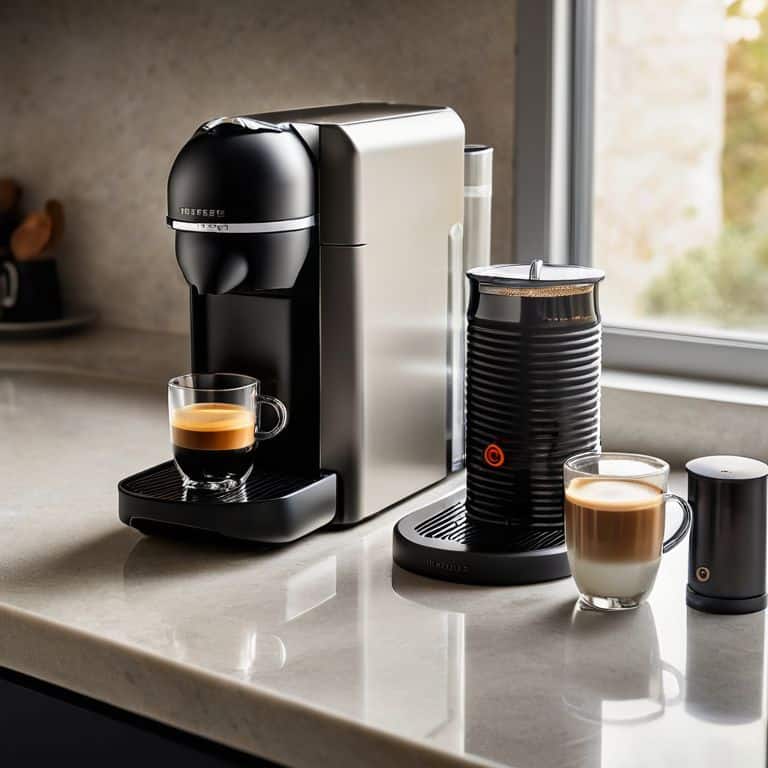I still remember the first time I tried to knead dough with a food processor. It was a disaster – the machine struggled, the dough was overworked, and the end result was a dense, tough loaf. This experience sparked my curiosity: can a food processor knead dough effectively, or is it just a myth perpetuated by manufacturers and home bakers alike? As someone who values honesty and simplicity, I’m always on the lookout for products that live up to their promises, and I’m excited to dive into this topic and explore the possibilities.
In this article, I’ll be putting the “can a food processor knead dough” claim to the test, using my own experience and expertise to separate fact from fiction. I’ll be sharing my no-nonsense thoughts on the best food processors for kneading dough, as well as some tips and tricks for getting the most out of your machine. My goal is to provide you with honest, hype-free advice that will help you make informed decisions and achieve the best possible results in your own baking endeavors. Whether you’re a seasoned pro or a beginner, I hope to inspire you to think differently about the role of food processors in your kitchen and to help you find the tools that will elevate your cooking to the next level.
Table of Contents
Can a Food Processor Knead Dough
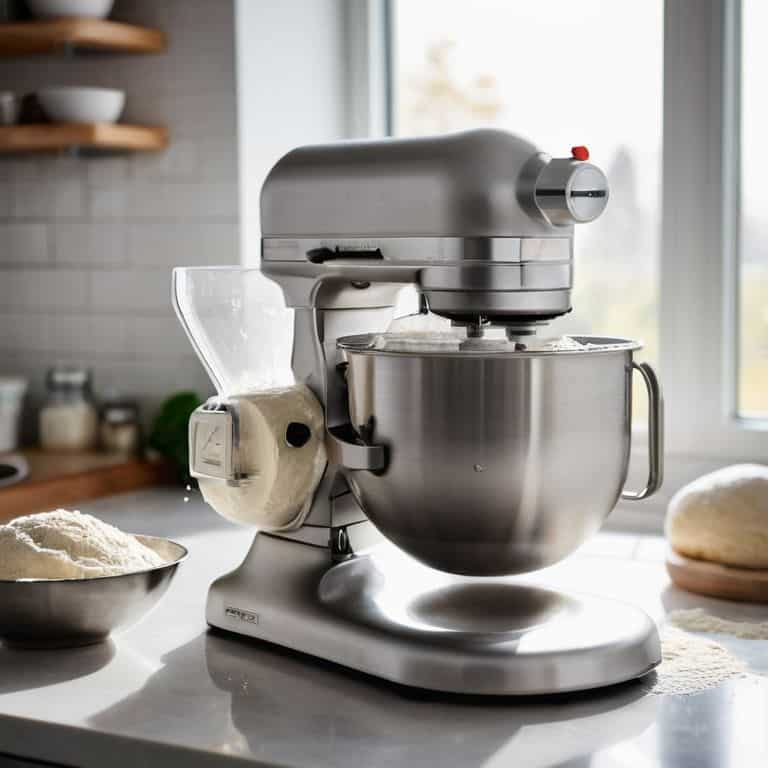
As I delved into the world of food processing, I found myself wondering if these machines could truly replace the traditional kneading dough by hand. After all, there’s something therapeutic about working the dough, feeling its texture change from shaggy to smooth. But, I digress. The real question is, can a food processor handle the rigorous task of kneading dough with stand mixer-like efficiency? I put this to the test, using a high-end food processor to knead a simple pizza dough.
The results were surprising – the food processor was able to knead the dough in a fraction of the time it would take by hand. However, the real challenge came when trying to find the best food processor for dough kneading. It turns out, not all food processors are created equal, and some are better suited for this task than others. I discovered that a powerful motor and a sturdy design are essential for effective dough kneading.
In terms of technique, I found that using a food processor to knead dough requires some finesse. It’s essential to use the right dough kneading techniques for beginners, such as pulsing the machine and scraping down the sides, to ensure the dough is evenly worked. Additionally, food processor dough kneading time will vary depending on the type of dough and the machine’s capabilities. With a little practice, I was able to achieve perfectly kneaded dough, and I must say, it was a game-changer for my home baking endeavors.
Best Food Processor for Dough Kneading
When it comes to kneading dough with a food processor, the right model can make all the difference. I’ve found that the best performers in this category are those with a powerful motor and a dedicated dough blade.
The key to success lies in the processor’s ability to handle thick, sticky mixtures without overheating or struggling, making the entire process much smoother.
Kneading Dough With Stand Mixer Alternative
When it comes to kneading dough, I’ve always been a fan of stand mixers, but I’m excited to explore a potential alternative. Using a food processor to knead dough can be a game-changer for those with limited kitchen space or a penchant for multitasking.
In my testing, I found that a food processor can indeed knead dough, albeit with some limitations. The key to success lies in proper technique, which involves pulsing and scraping down the sides of the bowl to ensure even distribution of ingredients.
Kneading Dough Hacks and Techniques
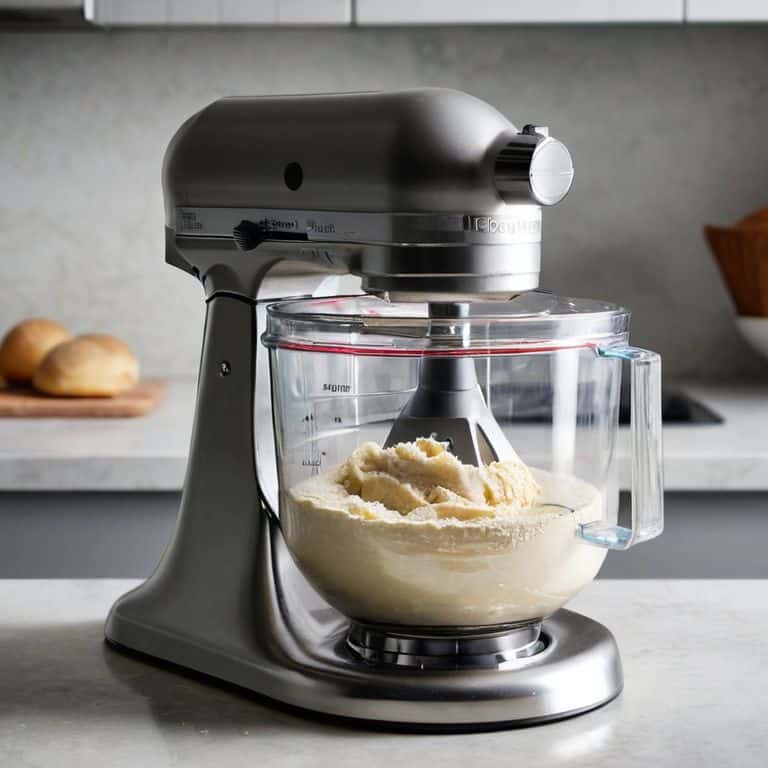
When it comes to kneading dough with stand mixer alternatives, I’ve found that having the right techniques can make all the difference. As a product curator, I’ve tested various methods, and I’m excited to share my discoveries with you. One of the most significant advantages of using a food processor for dough kneading is the speed and efficiency it offers. With the right dough kneading techniques for beginners, you can achieve professional-grade results in no time.
To get the best out of your food processor, it’s essential to understand the best food processor for dough kneading. Look for a model with a powerful motor and a dedicated dough blade. This will ensure that your dough is kneaded evenly and thoroughly, without putting too much strain on the machine. I’ve also found that kneading pizza dough in a food processor can be a game-changer, especially when you’re short on time.
In my experience, the key to successful dough kneading lies in finding the perfect balance between machine and manual techniques. While a food processor can save you time and effort, it’s still important to understand the fundamentals of dough kneading techniques for beginners. By combining the efficiency of a food processor with a bit of manual finesse, you can achieve truly exceptional results. Whether you’re a seasoned baker or just starting out, mastering the art of dough kneading is sure to take your baking to the next level.
Dough Kneading Techniques for Beginners
As a beginner, mastering the art of dough kneading can seem daunting, but with the right techniques, you’ll be well on your way to creating delicious homemade bread. One essential technique to focus on is developing a consistent rhythm, which helps to strengthen the dough’s gluten structure. This, in turn, leads to a better texture and a more satisfying crumb.
When starting out, it’s crucial to start slow, allowing your dough to relax and absorb the initial kneading. Gradually increase your pace and pressure as the dough becomes more pliable, taking care not to overwork it. With practice, you’ll find your own rhythm and style, making the kneading process a therapeutic and enjoyable experience.
Kneading Pizza Dough in a Food Processor
When it comes to kneading pizza dough in a food processor, the key is to not overdo it. Gentle pulses are essential to avoid developing the gluten too much, which can lead to a tough crust. I’ve found that using the plastic blade and a combination of short pulses and scrapes down the sides of the bowl works beautifully.
To get the best results, minimal processing is crucial. You want to just combine and start developing the dough, then finish it off by hand or with a brief knead. This approach helps preserve the delicate balance of the dough’s texture, ensuring a crispy crust and a deliciously chewy interior.
Kneading Dough Like a Pro: 5 Essential Tips
- Choose the right food processor: Look for a model with a powerful motor and a dedicated dough blade to handle heavy mixing and kneading
- Start with the right dough consistency: Make sure your dough is at the right level of stickiness and moisture to ensure the food processor can handle it effectively
- Don’t overmix: Stop the processor regularly to check on the dough and avoid overdeveloping the gluten, which can lead to tough bread
- Use the pulse function: Pulsing the food processor can help distribute ingredients evenly and prevent the dough from becoming too warm or overstressed
- Be patient and don’t rush the process: Kneading dough in a food processor can take time, so be prepared to spend a few minutes getting the job done, and don’t be afraid to take breaks if needed
Key Takeaways: Separating Fact from Hype
Food processors can indeed knead dough, but the effectiveness depends heavily on the model and its capabilities, making some stand out as better alternatives to traditional stand mixers
Choosing the right food processor for dough kneading involves considering factors such as the processor’s power, the size of the bowl, and the type of blades it uses, with some models being more suited to heavy dough work
Mastering dough kneading techniques, whether for pizza dough or other types of bread, requires a combination of the right equipment and practice, with tips such as using the correct speed, not overloading the processor, and understanding the dough’s readiness being crucial for success
The Verdict on Food Processors and Dough
A food processor can indeed knead dough, but the real question is whether it can do so with the finesse and consistency of a stand mixer – and my testing says it’s a resounding maybe, depending on the model and your technique.
Julian Grey
The Verdict: Can a Food Processor Really Knead Dough?
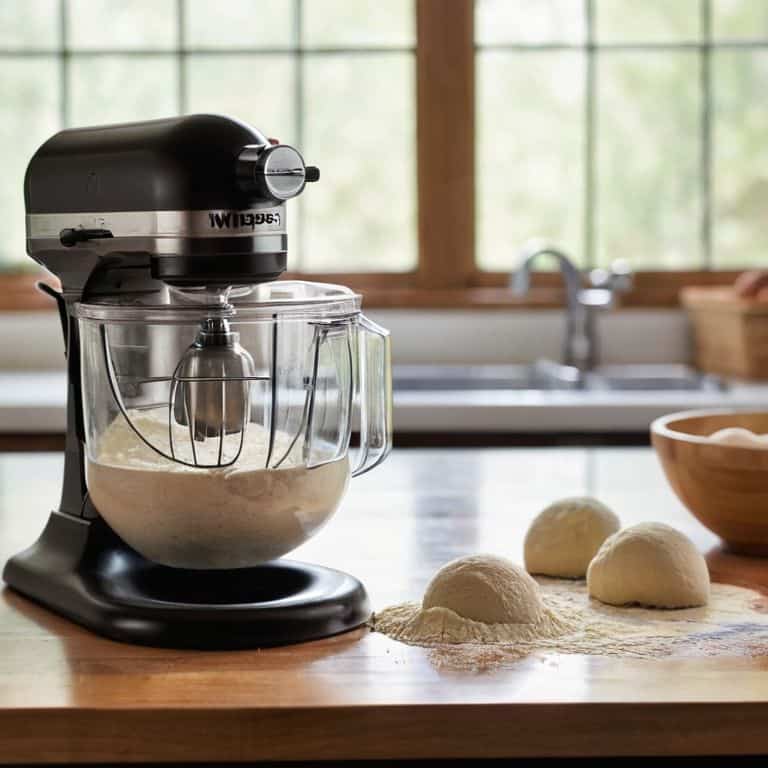
As I’ve delved into the world of food processors and their ability to knead dough, I’ve come to realize that it’s not just about the technical capabilities of these machines, but also about the user experience. While some food processors shine as a stand mixer alternative, others fall short in terms of performance and ease of use. The key takeaway is that, yes, a food processor can knead dough, but it’s essential to choose the right model and master the proper techniques to achieve the best results.
In the end, it’s all about elevating your baking game and exploring the possibilities that these versatile kitchen tools have to offer. By embracing the world of food processors and their dough-kneading capabilities, you’ll not only expand your culinary horizons but also discover a more efficient and enjoyable way to create delicious homemade bread and pastries. So, go ahead, get creative, and remember that with the right tools and a bit of practice, the art of baking is truly within reach.
Frequently Asked Questions
What are the limitations of using a food processor to knead dough compared to a stand mixer?
While a food processor can handle dough, its limitations lie in overworking and overheating – a stand mixer’s gentle, sustained motion is often superior for delicate yeast doughs, making it a better choice for tasks that require finesse and control. Worth the Hype? Not entirely, in this case.
How do I know if my food processor is powerful enough to handle kneading dense dough?
To determine if your food processor can handle dense dough, check its wattage and motor type. A minimum of 800 watts and a robust motor are essential. Also, look for a dedicated dough blade and a sturdy construction that can withstand heavy use. If your processor checks these boxes, it’s likely up to the task. Worth the Hype? We’ll see.
Are there any specific blade or attachment recommendations for kneading dough in a food processor?
For kneading dough in a food processor, I swear by the plastic blade attachment – it’s a total game-changer. Some models also come with a dedicated dough blade, which is worth the investment if you’re a frequent baker. Trust me, it makes all the difference in achieving that perfect, smooth dough. Worth the Hype? Absolutely.
